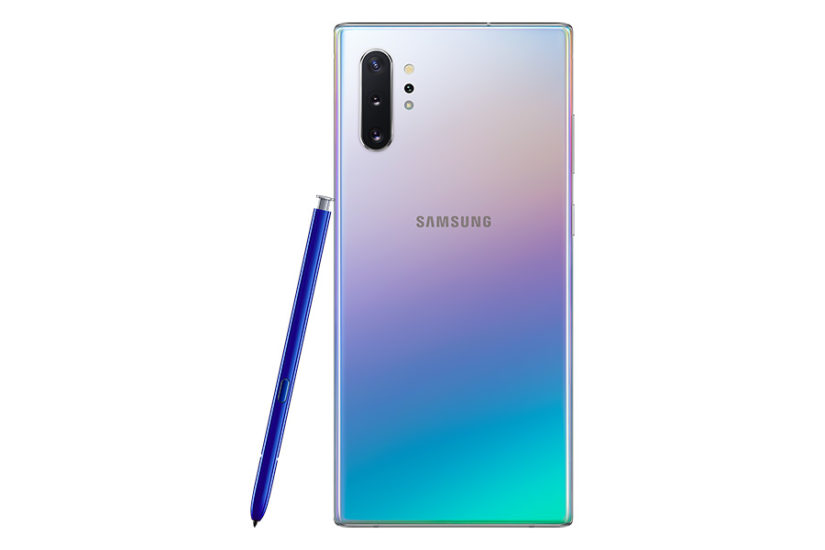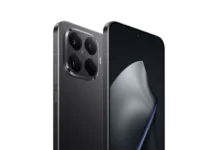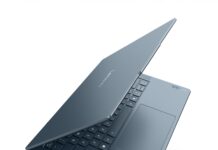Now that all the smartphone manufacturers have presented their flagship devices for the year, it is time for NXT to conduct the super test to compare the best phones that the brands have to offer. Just like the previous years, the first half of the year sees the announcements of premium mainstream phones while the second half is focused on the productivity series.
Looking back over the months, the smartphone development for 2019 has been eventful. For Samsung, it celebrates the 10th anniversary of the Galaxy series, hence it is filled with some fanfare. For Huawei, they are affected by the Google licensing woes. For Apple, they are faced with stagnant innovation and declining global sales.
But it’s now all is clear with the launches of their latest smartphones. This article will be a fair comparison across the models since they are the latest and presumably the best that each company can offer.
Huawei Mate 30 Pro

It is quite hard to imagine what enhancements Huawei could bring to the table with the new Mate 30 Pro. After releasing the industry-leading camera system on the P30 Pro, the Mate 30 Pro further enhances the smartphone experience with empowering features. Let’s start with the Leica camera system: the Mate30 Pro can now achieve even more imaging possibilities. It is the first smartphone camera that can record in ultra slow-motion 7680 fps, providing amazing motion picture perspective. The low-light capability is also extended to creating time-lapse videos.
All these are possible because of the latest Kirin 990 processor that delivers faster speed, low latency, long usage time and strong image processing capabilities. There are also a handful of really useful AI functions that simply works. For instance, AI Auto Rotate will follow the orientation of your face to rotate the screen. The touchless gesture control lets you navigate the screen without touching, and while it is rather cumbersome to scroll, it is still a viable option in the event that you are unable to reach for the screen. The hardware volume buttons are removed, so users have to double tap the Horizon Display sides to adjust volume, but the good thing is that you can trigger the volume control on either sides of the phone.
The biggest handicap is not just the missing Google Play Store. Sure, you can use alternative app stores like Amazon, APKPure, APKMirror to find most of your apps like Whatsapp and Instagram, and you can also download apps from official apps like Facebook or use a web browser to access your Google Docs. The biggest problem is that if you use apps like Google Pay, Google Home and Google Photos everyday, or need Google Maps support for your third party transport and delivery apps, well many of these may not function properly, so if you have been a loyal supporter of Google products, the Mate 30 Pro is not going to work for you.
Putting that aside, the smartphone is yet another significant leap from Huawei, contributing more towards improving the mobile experience. The 4500mAh battery capacity coupled with 40W SuperCharge will refuel the phone in no time. Let’s hope the licensing issues with US can be resolved just as quickly.
iPhone 11 Pro

After a whole year, Apple fans are finally getting a new iPhone design update, but no one expected the phone to accentuate on its now-iconic camera module. The new iPhone 11 Pro comes with 2 bumps when smartphone manufacturers try at best to create a seamless flush. The notorious notch still remains on the front display, and after two years of transition, Apple assumes pre-iPhone 8 users would have gotten the message to move on to the Face ID unlock experience.
But you have to give it to Apple for creating an amazing cohesive UI. I am visually impressed at how the camera transitions from one zoom range to the other smoothly without a hint of camera switching. They work seamlessly together as if it’s a single camera. On other Android phones, you would have noticed a slight perspective and colour tone change. Another interesting feature is that the app shows what is outside the image frame, which could help you in anticipating the moments before it enters into the frame to be captured. Another really helpful feature on the camera app includes ability to shoot video from the photo mode.
Being iPhone’s first ultra-wide angle smartphone, Apple put much emphasis on the ability to capture perspectives in tight spaces. Indeed, the images on the iPhone 11 Pro is less processed. Low light shots are less over-exposed and more artistic, with on-screen settings to adjust the exposure timing that best suits the scene. There is also no question at the performance of the new A13 Bionic chip, although the animations make the phone feel less snappy. Apple has firmly established the iPhone as a premier video recording tool that is even good enough for professional cinematographers.
All in all, the new iPhone 11 Pro provides improved user experience and increased features that makes the owner less inclined to jump ship to the Android camp. They may still lose out in some aspects, but there are fewer trade-offs. The iPhone 11 Pro uses premium materials of generous stainless steel around the sides and matt glass design at the back.
Samsung Galaxy Note10+

With the two brand new phone models from the close competitors, how does the relatively old Galaxy Note10+ stand? Quite firm, we must say. In this shootout, the Note10+ remains the best smartphone when it comes to overall productivity, thanks to the large display and the S Pen. It offers the most unobtrusive display with the Infinity-O design instead of a large notch, and the stereo speaker produces the best sound among the three flagships. Watching videos and gaming would be more immersive.
And while Samsung has maxed out the 6.8-inch Super AMOLED display to the edges, the phone feels somewhat less chunky, thanks to making the device even slimmer than the Note9. The phone feels more comfortable on the hand than previous models, because of all the finer details to contour the glass around the edges and keeping the metal on the left and right sides as thin as possible.
The additional features on the Galaxy Note10 series is the software. With the added DepthVision camera, there are more real-time AR capabilities that the phone can process. The AR Doodle demonstrates that you can draw on a person’s face and the doodles can track and move in tandem to the faces. The Live Focus Video supports background effects like bokeh, glitches, but only works when faces are detected. The 3D scanner lets you scan an object in 360-degree, after which you can animate it by tracing a real person’s movement. One general limitation on the Live Focus is that the camera must detect faces in order to process. Unlike Huawei Aperture mode, the Samsung camera cannot create artificial depth of field when shooting non-facial objects.
Other than the new features, the S Pen remains a formidable companion to the stylus lovers who can create amazing digital art and calligraphy, and on many occasions, a more precise selection tool compared to the stubby fingers. There are situations where the finger is simply no match to achieve accurate on-screen positioning, for instance, when trying to drag a clip to start at the precise millisecond position. Or, when you need to insert handwritten notes on Instagram Stories. If you are a content creator, it is very hard to challenge the benefits of a stylus.
If you create all sorts of contents from videos, drawings, writings, and watches streaming videos, then the Samsung Galaxy Note10+ would be a better smartphone to own among the three.
Comparison Results
| Phones | Huawei Mate 30 Pro | iPhone 11 Pro | Samsung Galaxy Note10+ |
| Design | 4.5 | 4 | 4 |
| Performance | 4 | 4.5 | 4.5 |
| Display | 4 | 4.5 | 4.5 |
| Camera Features and Quality | 4.5 | 4 | 4 |
| Feature List | 4.5 | 4 | 4.5 |
| Price Value | 4.5 | 3.5 | 4 |
| Score | 26 | 24.5 | 25.5 |
Test Winner: Huawei Mate 30 Pro

Once again, Huawei has impressed NXT with its Leica quad camera system that delivers more imaging possibilities, like the 30x digital zoom, the 7680fps ultra slow-motion which no other smartphones can achieve, and ultra low-light photos where iPhone 11 Pro has valiantly caught up. Having said that, the other smartphones also deliver impressive images in their own right. iPhone 11 Pro favours detail and faithfulness rather than over-processing, while Note10+ goes for a little more heavy on HDR to achieve better out-of-cam look. Still, the number of shooting modes and the flexibility on the Mate 30 Pro surpasses the other two competitors.
The areas on the iPhone 11 Pro that did not impress us are the overall phone design and the price value. We believe that Apple has dedicated themselves to excel in professional-level imaging, so emphasising the lenses would give them the attention they deserve. Let us hope that the design does not get blindly copied like the display notch.
For Galaxy Note10+, it excelled in most areas except for price value and camera features. We would have given all smartphones the same scores for camera quality, but the Huawei Mate 30 Pro surpassed through their comprehensive camera system, massive pixel count, outstanding zoom range, and more flexible shooting controls like simulated aperture for background blur.
In terms of product specifications, the Huawei Mate 30 Pro is the winner. If you aren’t concerned about the absence of Google apps and enjoy experimenting, in line with the spirit of open-source Android platform, then the Huawei Mate 30 Pro is for you.
The Huawei Mate 30 Pro is available at S$1,298. Register your interest online before 15 October to be one of the 200 registrants selected at random to be invited to a private event and receive an exclusive gift bundle $463 upon the purchase of the Mate 30 Pro.
https://consumer.huawei.com/sg/campaign/mate-30-register/
Huawei Mate 30 Pro Technical Specifications
Processor Kirin 990
Display 6.53-inch OLED (2400 x 1176) DCI-P3 colour space
Memory 8GB RAM, 256GB ROM
Rear Camera 40MP SuperSensing Camera f/1.6, 40MP Cine Camera f/1.8, 8MP Telephoto Camera f/2.4, 3D Depth Sensing Camera
Front Camera 32MP f/2.0
Operating System EMUI 10 (based on Android 10)
Connectivity Wi-Fi 802.11 a/b/g/n/ac, Bluetooth 5.1, USB Type-C, NFC
Battery 4500mAh
Dimensions 158.1 x 73.1 x 8.8 mm (HxWxD)
Weight 198g

The iPhone 11 Pro is available from S$1,649 (64GB)
iPhone 11 Pro Technical Specifications
Processor A13 Bionic chip
Display 5.8-inch OLED (2436 x 1125)
Memory 8GB RAM, 256GB ROM
Rear Camera Triple 12MP Ultra Wide f/2.4, Wide f/1.8, Telephoto f/2.0
Front Camera 12MP TrueDepth f/2.2
Operating System iOS 13
Connectivity Wi-Fi 802.11 ax Wi-Fi 6 with 2×2 MIMO, Bluetooth 5.0, NFC
Dimensions 144 x 71.4 x 8.1 mm (HxWxD)
Weight 188g

Samsung Galaxy Note10+ is available from $1,598 (256GB)
Samsung Galaxy Note 10+ Technical Specifications
Processor Samsung Exynos 9825 7nm 64-bit Octa-core processor
Display 6.8-inch Quad HD+ Dynamic AMOLED Infinity-O Display
Memory 12GB RAM, 256GB/512GB Internal Storage
Rear Camera Telephoto: 12MP f/2.1, Wide Angle: 12MP f/1.5-2.4, Ultra Wide: 16MP f/2.2, DepthVision Camera: VGA
Front Camera 10MP AF f/2.2
Operating System Android 9.0 Pie
Connectivity Wi-Fi 802.11 a/b/g/n/ac/ax, Bluetooth 5.0, USB Type-C NFC, MST
Battery 4300mAh
Dimensions 162.3. x 77.2 x 7.9mm
Weight 196g








